USA Boating
Step-By-Step Guide to Anchoring Your Boat
December 19, 2024
Anchoring your boat may seem simple, but there are a few things you need to know to get it right. If you don’t learn the proper steps, you risk capsizing, damaging your boat, or finding yourself adrift even though you thought you were securely anchored. How to anchor your boat: the basics There’s nothing … Read more ›
State Boater Education Card Courses: Your Questions Answered
October 30, 2024
Keep reading to find answers to all your questions about state boating cards, certificates, licenses and courses. Meeting your state’s requirements is probably easier than you think! What’s a boater card for? A boater card demonstrates that the operator understands safe boating practices and regulations in their state and across the USA. You have … Read more ›
Boating Buoys and Markers: Red & Green Buoy Meanings
September 26, 2024
Buoys, beacons and markers are types of navigation aids, also called Aids to Navigation or ATONs. They are the boating equivalent of road signs: human-made objects that can be used to determine safe course and follow the rules while driving a vessel. Here we’ll break down the difference between lateral and non-lateral markers, and … Read more ›
Everything You Need to Know About Safe Boating with Dogs
August 23, 2024
Are you considering taking your dog with you while boating? As of 2024, nearly 40% of U.S. households own a dog. This translates to about 65 million households with dogs in the United States. If only half of these dogs go boating at some point during their lifetime, that’s a lot of dogs out on … Read more ›
All About Vessel Safety Checks (VSC) in the U.S.
The Vessel Safety Check program was first offered in 1947 to verify the safety of motor boats, but today it is available for boats of all types, including small watercraft like canoes and paddle boats. The Coast Guard Auxiliary selects examiners to give the VSC completely free of charge, and you won’t be punished … Read more ›
Tips and Tricks for Docking Your Boat
Docking a boat can be tricky, and it feels like there is a lot at stake when there are people watching. Drive A Boat USA is here to explain how to dock your boat without injuring yourself or damaging any property. These tips and tricks will help, but remember that the best way to … Read more ›
Diver Down Flag: What It Looks Like and When To Use It
August 7, 2024
Federal law stipulates that scuba divers and snorkelers in the United States use a specific type of flag to warn boaters of their presence in the water. Purpose of a diver-down flag Diver down flags are an important type of safety equipment that can prevent collisions between boats and divers and minimize the risk … Read more ›
Parts of a Sailboat & Sailing Terminology
A sailboat consists of several key components that work together to harness wind power and navigate through water. Anyone learning to sail or interested in the mechanics of sailboats should know what these parts are called and what they do. Main parts of a sailboat While not all sailboats have exactly the same structure, … Read more ›
All About Safe Boating with Infants and Children
If you love boating, you may be wondering how soon you can take your infant or child out on the water with you. Here are tips for boating with kids, and especially for deciding if, when and how to take your infant, toddler or child on a boat with you. Safe boating with infants … Read more ›
Boat Right of Way Rules and Power-Driven Vessel Path Crossing
July 2, 2024
Safe boating involves knowing the rules of navigation by heart. When you’re approaching another boat, or another boat is approaching you, there’s no time to check your rulebook! Keep reading to learn the rules of right-of-way for power-driven pleasure craft. Important terms for understanding right-of-way First, get to know the difference between port and starboard. … Read more ›


